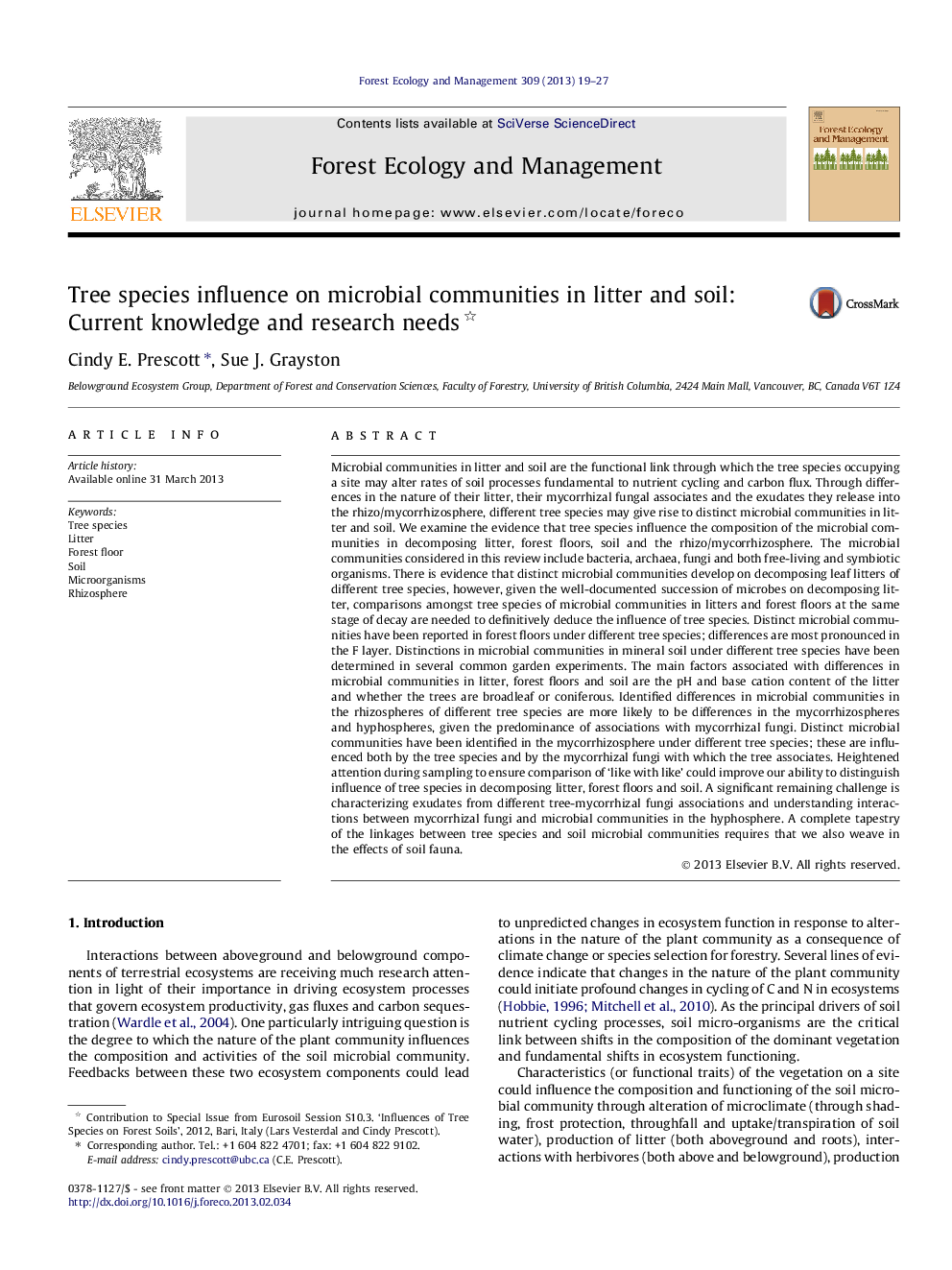| Article ID | Journal | Published Year | Pages | File Type |
|---|---|---|---|---|
| 86668 | Forest Ecology and Management | 2013 | 9 Pages |
Microbial communities in litter and soil are the functional link through which the tree species occupying a site may alter rates of soil processes fundamental to nutrient cycling and carbon flux. Through differences in the nature of their litter, their mycorrhizal fungal associates and the exudates they release into the rhizo/mycorrhizosphere, different tree species may give rise to distinct microbial communities in litter and soil. We examine the evidence that tree species influence the composition of the microbial communities in decomposing litter, forest floors, soil and the rhizo/mycorrhizosphere. The microbial communities considered in this review include bacteria, archaea, fungi and both free-living and symbiotic organisms. There is evidence that distinct microbial communities develop on decomposing leaf litters of different tree species, however, given the well-documented succession of microbes on decomposing litter, comparisons amongst tree species of microbial communities in litters and forest floors at the same stage of decay are needed to definitively deduce the influence of tree species. Distinct microbial communities have been reported in forest floors under different tree species; differences are most pronounced in the F layer. Distinctions in microbial communities in mineral soil under different tree species have been determined in several common garden experiments. The main factors associated with differences in microbial communities in litter, forest floors and soil are the pH and base cation content of the litter and whether the trees are broadleaf or coniferous. Identified differences in microbial communities in the rhizospheres of different tree species are more likely to be differences in the mycorrhizospheres and hyphospheres, given the predominance of associations with mycorrhizal fungi. Distinct microbial communities have been identified in the mycorrhizosphere under different tree species; these are influenced both by the tree species and by the mycorrhizal fungi with which the tree associates. Heightened attention during sampling to ensure comparison of ‘like with like’ could improve our ability to distinguish influence of tree species in decomposing litter, forest floors and soil. A significant remaining challenge is characterizing exudates from different tree-mycorrhizal fungi associations and understanding interactions between mycorrhizal fungi and microbial communities in the hyphosphere. A complete tapestry of the linkages between tree species and soil microbial communities requires that we also weave in the effects of soil fauna.
Graphical abstractFigure optionsDownload full-size imageDownload as PowerPoint slideHighlights► Distinct microbial communities occur in litter and soil under different tree species. ► Comparisons at the same stage of litter decay are necessary but uncommon. ► Microbial communities most distinct between broadleaf and coniferous species. ► Mycorrhizosphere community influenced by tree species and mycorrhizal fungi.
